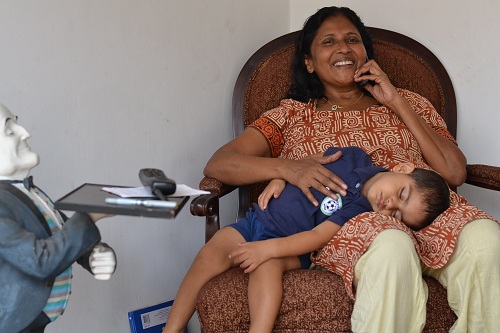A Minor Diversion’s posting frequency will fall until February 23rd. We are in Myanmar, where internet access is not a guarantee. I’ve set up these posts to go live while we are away. Even though they are about our time in India, I didn’t want to miss sharing some final Kerala experiences with you. We’ll have stories from Myanmar once we are back.
The term spice usually conjures up thoughts of fiery tongues. In reality, spices are varied. No place in the world offers a bounty as rich as India. In addition to black peppercorns (which can cause one to run for water), spices include such sweet things as cinnamon, cloves, cardamom, anise seed and nutmeg. In terms of global spice production, India contributes over 80 percent.
Kerala land is so fertile, that spices grow everywhere, and pepper vines seem to crawl up every available tree. Most houses here harvest some spices on their own property. This drying pepper was just outside a small village house by Allepuzha.
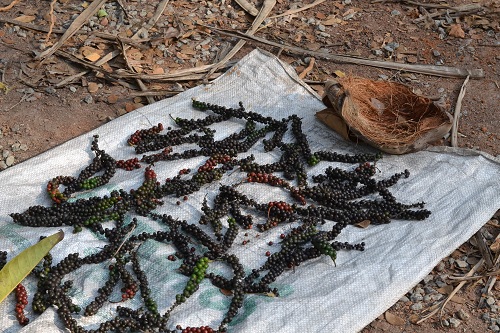
In addition to the unavoidable black pepper and green chilies, spices find their way into almost every Kerala dish. My ultimate favorite is stew, which showcases several spices in a light coconut gravy. This is the dish Amma prepared the first time I met Sandeep’s parents. After falling in love with him, this dish had me falling for Amma too.
Stew is easy on the tongue since the black peppers and green chilies remain relatively intact, adding just enough warning so you know they exist. Stew can be made with vegetables, mutton or fish. Here is a step by step guide taken as I follow Amma along.
The spices are set aside in two equal batches. One will be boiled with the mutton, another will be roasted to the make the gravy. The spices include about a tablespoon each of whole black pepper, whole cardamom, and whole cloves, along with several broken sticks of cinnamon.
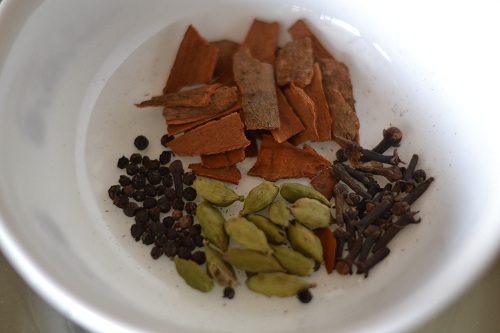
2 pounds of cubed mutton, with bones, are cooked with half the spices, a teaspoon of salt and a tablespoon of vinegar (or lemon juice) until the meat is tender.
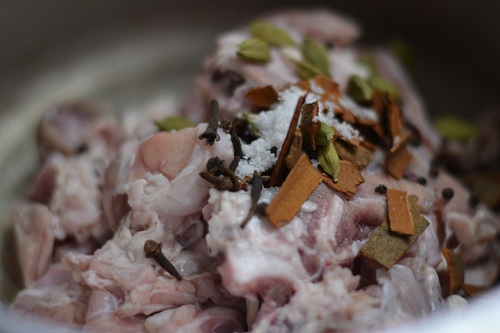
The remaining spices are roasted in a heavy pan. A mix of 2 large sliced onions, 2 inches of chopped ginger, 4 large crushed garlic pods, two sprigs of curry leaves and four sliced green chilies (or less if four sounds scary) are then added and sautéed until the onions are soft. A couple of carrots and potatoes can be added in at this point if you want vegetables.
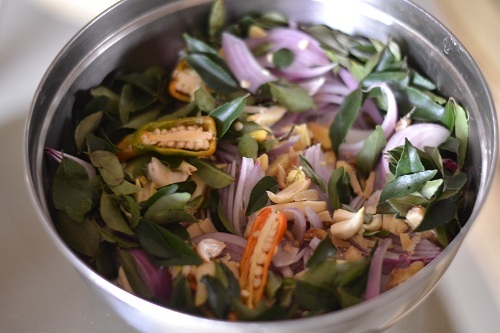
The sautéed mixture is added to the meat and cooked until the potatoes are done. Lastly, two cups of coconut milk are added, with two quartered tomatoes. The stew simmers for another few minutes (but is never allowed to boil) and the dish is ready. My experience is that letting the stew rest for a while results in a stronger infusion of the spices into the coconut milk
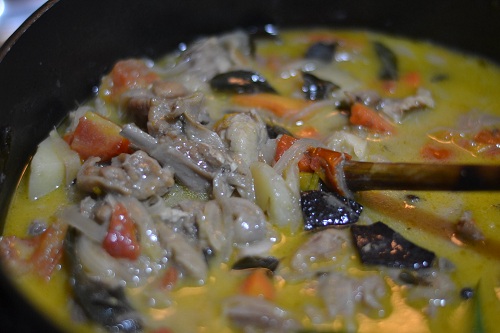
Stew is traditionally served with appam, a rice pancake cooked in a small wok (likely a handover from Chinese influence in the area). Appam can be made from scratch, but in this case Amma uses a packet. One ladle of mixture is spooned into the middle of the wok, and then with an elegant twist of her wrists, Amma swirls the batter. The result is a lacy frill and pillowy center, perfect for soaking the stew.
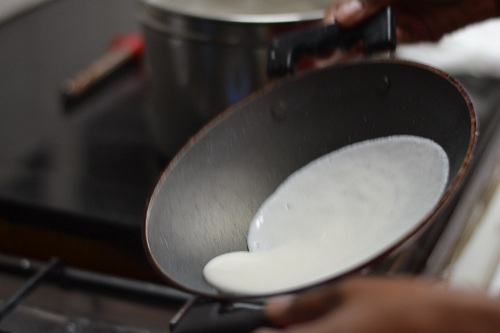
The stew brims with the flavors of the spices. I learned that it is perfectly acceptable to push aside the spices and just enjoy the gravy, vegetables and meat. A mouthful of cloves and cardamom is overwhelming, even to a Malayalee. I’ve had stew all over Kerala, but Amma still gets the best results out of her spices. Here is Kayan, blissfully passed out on her lap after filling his belly with a stew meal.
